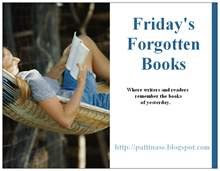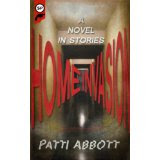
For a discussion of Margaret Millar, go here. And here. There is also an issue in CLUES MAGAZINE, which deals with her extensively.
Ed Gorman is the author of the Sam McCain and Dev Conrad series of mysteries. He also writes westerns short stories and edits anthologies. You can find him here.
MERMAID, Margaret Millar

THE IRON GATES, Patti Abbott
This was originally published on THE RAP SHEET.
The Iron Gates was Margaret Millar’s sixth novel, published in
 1945. It featured a return of Inspector Sands of the Toronto police force. Millar (who was, of course, Ross Macdonald’s wife) didn’t use Sands in her novels often, and The Iron Gates was not one of her more famous crime novels. The Edgar Award-winning Beast in View (1955), How Like an Angel (1962), and The Fiend (1964) are the three books for which she’s probably best known. Although Millar is not well-remembered nowadays, devotees find her writing particularly rewarding. She’s especially skillful at portraying women, although her stories are very different from those of writers known for targeting female audiences.
1945. It featured a return of Inspector Sands of the Toronto police force. Millar (who was, of course, Ross Macdonald’s wife) didn’t use Sands in her novels often, and The Iron Gates was not one of her more famous crime novels. The Edgar Award-winning Beast in View (1955), How Like an Angel (1962), and The Fiend (1964) are the three books for which she’s probably best known. Although Millar is not well-remembered nowadays, devotees find her writing particularly rewarding. She’s especially skillful at portraying women, although her stories are very different from those of writers known for targeting female audiences.Millar’s greatest strength was in exposing the psychological underpinnings of a crime. Her books are more about motivation than detection. What appealed to me most as I read her novels back in the 1970s was that her writing was never formulaic or predictable. Her best work is found in the standalones. Even Sands, a charming and fully fleshed-out detective, never steals the story from the women who dominate The Iron Gates entirely. It’s not about the detective.
Lucille Morrow lives with her wealthy physician husband, his two grown children, and his sister, Edith, in a large house in Toronto, Ontario. Lucille is Andrew’s second wife. His first wife, Mildred, was murdered in a nearby park 16 years earlier. That case was never solved. The two stepchildren, Polly and Andrew, tolerate their stepmother. And she tolerates them. This uneasy rapprochement begins to come undone when Polly, along with her father and brother, goes to pick up her new fiancé, a soldier who’s coming to Toronto to meet the family. A train crash complicates their trip, but they return home later that night.
The next day, Lucille suddenly disappears after a visit from a strange man carrying a small wrapped box. The last that is heard from her is a scream. She is eventually run down by the Toronto police and her condition is such that she’s institutionalized. This action, mainly occurring in the Morrow household, forms the first section of the novel, which Millar labels as “The Hunt.”
The middle section, “The Fox,” details Lucille’s state of mind as she hides from an assailant, the police, or perhaps her own fears in a mental hospital. The reader is unsure which she sees as the greatest threat. Her involvement with other patients turns out badly. Much of this section of the novel describes her mental anguish, and the reader is left to ponder whether Lucille is the victim she appears to be. Who or what is after her?
The final section of this novel, “The Hounds,” details Sands’ solution to the crimes that have taken place. This section is again largely set in the Morrow household and concerns a diary newly unearthed. Giving away any more plot points would ruin the delicate nature of Millar’s story.
It’s hard to imagine this book being written in 2010, because of its lengthy depiction of a mentally fragile woman in an institution. Today, Lucille Morrow would be prescribed an appropriate drug. Or perhaps she’d be under the daily care of a psychiatric nurse at home. Nevertheless, Millar uses the middle section of The Iron Gates to provide clues, and to do what she does best: show the unraveling of a psyche. It’s also the section of this book that makes Millar’s storytelling different. We go from the calm, if slightly hothouse, feel of the Morrow home in section one, to the agitated madhouse of section two, and then back again.
This novel was apparently purchased after World War II as a vehicle for actress Bette Davis, but was never filmed. I think she would have done justice to Lucille Morrow. However, after reading The Iron Gates, you will understand why the movie wasn’t made.
 ed her the better writer. She won an Edgar Award for Best Novel for Beast in View and I'd also recommend titles like The Listening Walls and How Like an Angel (excellent private eye tale).
ed her the better writer. She won an Edgar Award for Best Novel for Beast in View and I'd also recommend titles like The Listening Walls and How Like an Angel (excellent private eye tale).Deb Pfeifer: About me: After almost two decades as a technical writer, I was a stay-at-home mom for a while. Then I went back to work in the public school system. I currently work at a local high school in a special ed classroom with severely autistic students. It is challenging work, but also very rewarding. I love to read across all genres, but mysteries are my favorite.
THE INVISIBLE WORM by Margaret Millar
Prior to reading THE INVISIBLE WORM for this week's FFB, I had read only one other Margaret Millar novel, THE BEAST IN VIEW, an excellent study of a woman's descent into madness (and winner of the Edgar Award for Best Novel of 1956). Based on BEAST, I had not expected the rather satirical tone and humor of 1941's THE INVISIBLE WORM which, from what I can determine, was Millar's first published book.
THE INVISIBLE WORM is essentially an American version of the popular British country-house mystery. The house in this case is located in Mertonville, an upscale Chicago suburb, and belongs to an unhappily married couple, George and Barbara Hays. When the body of a womanizing blackmailer named Thomas Philips is discovered, Inspector William Bailey soon traces the murder to one of a dozen or so people who either live in the house or are currently visiting there. In addition to George and Barbara, the suspects include the adult Hays children, Eve and Simon, along with an assortment of house guests and servants. Each of these people has previously had some sort of unpleasant encounter with Philips and each of them has a secret to hide; that is, with the exception of one guest, Dr. Paul Prye, who--despite Bailey's initial scepticism--becomes the inspector's eyes and ears in the house.
As the investigation continues, a second murder occurs, followed by a third and a fourth (the body count is quite high considering the light-hearted tone of the book). Meanwhile, an incriminating photograph of one of the suspects is discovered by Bailey's meddling sister, Amanda (a tiresome character, both in the book and for the reader) and later a valuable necklace goes missing. Millar does a good job of keeping all the strands of the plot moving forward and gives Bailey and Prye plenty of time to hash out various scenarios and break certain alibis.
Although I enjoyed this book, I don't think it was quite a "fair play" mystery. Several crucial pieces of the puzzle are withheld until Bailey and Prye's "big reveal" at the end of the novel; and some of the characters (especially the inquisitive housemaid who listens at doors and a former stripper who has made an advantageous marriage) are presented in such broad strokes that they border on caricatures. In addition, there's an archness to Prye, with his unconventional methods of gathering evidence (which would undoubtedly be thrown out of court today) and his habit of quoting William Blake at each turn of the plot. These characteristics aside, however, apparently Millar and the public liked Prye well enough for him to appear in several subsequent mysteries after this breezy and pleasant debut.
James Reasoner
Richard Robinson
Other Links
Bill Crider
Scott Cupp
Martin Edwards
Ed Gorman
Nick Jones
Rob Kitchin
Evan Lewis
Steve Lewis
Terrie Moran
Ron Scheer
Bill Selnes
Michael Slind
Kerrie Smith
Kevin Tipple/Barry Ergang
TomCat















16 comments:
No Margaret Millar from me I'm afraid, Patti, but I do have these up:
http://existentialennui.blogspot.co.uk/2012/05/cold-waters-by-p-m-hubbard-geoffrey.html
http://existentialennui.blogspot.co.uk/2012/05/book-review-picture-of-millie-by-p-m.html
http://existentialennui.blogspot.co.uk/2012/06/xenophons-adventure-by-geoffrey.html
Take your pick!
Best,
Nick
No Margaret Millar from here either. I have to admit to having never read her. Barry has but he had nothing ready for her.
So, we wave from the sidelines. :)))
May I be excused for now? I'm working on a post but it's going to be awhile. Time gets away from me these days, Patti. If you like I can save it for next week since it's Millar-less.
Sure. Save it for next week. This day is quickly getting away from me since my writing group meets here tonight and I am not finished my story.
The problem with Margaret Millar novels is that they are somewhat hard to get. I don't find them at used book stores, and there are no electronic editions of any of her books. For some reason, I never read her along the way.
Very hard to get now. I had to get one from a library across the state.
Searched far and wide but couldn't come up with a single Margaret Millar in my part of the world. I got a couple of Ross Macdonalds, though. Perhaps, next time.
Patti, I'm sorry I deleted the second comment as I posted it twice by mistake. I'm blaming it on the word verification! Thought I'd got it wrong the first time.
Even difficult here, Prashant.
Oddly enough, I do think Robert Bloch and particularly Patricia Highsmith (in the wake of all that Ripley filming a decade back) are much easier to procure in the surviving bookstores and libraries...
Our three-branches library has the stories of both, a bio of Highsmith and Psycho.
Just yesterday, I almost picked up a Patricia Highsmith novel only to discover it was in a language alien to me. I haven't seen a Highsmith or Bloch in used and secondhand bookstores out here. The American Centre Library might probably have some in their collection.
I didn't notice my contribution on the list:
http://pulpetti.blogspot.fi/2012/06/fridays-forgotten-book-margaret-millar.html
Oops, that's me, Juri, commenting unintentionally under my wife's Google account! :)
Thanks so much for this -- I'm a big Margaret Millar fan, after reading just one of her novels (The Listening Walls). It's next to impossible to find any of her work, even here near Kitchener, Ontario where she and Ken were originally from! It's a shame.
The biography on Ross MacDonald by Tom Nolan should properly be considered a biography of the two of them -- it had great info on their life together.
Post a Comment